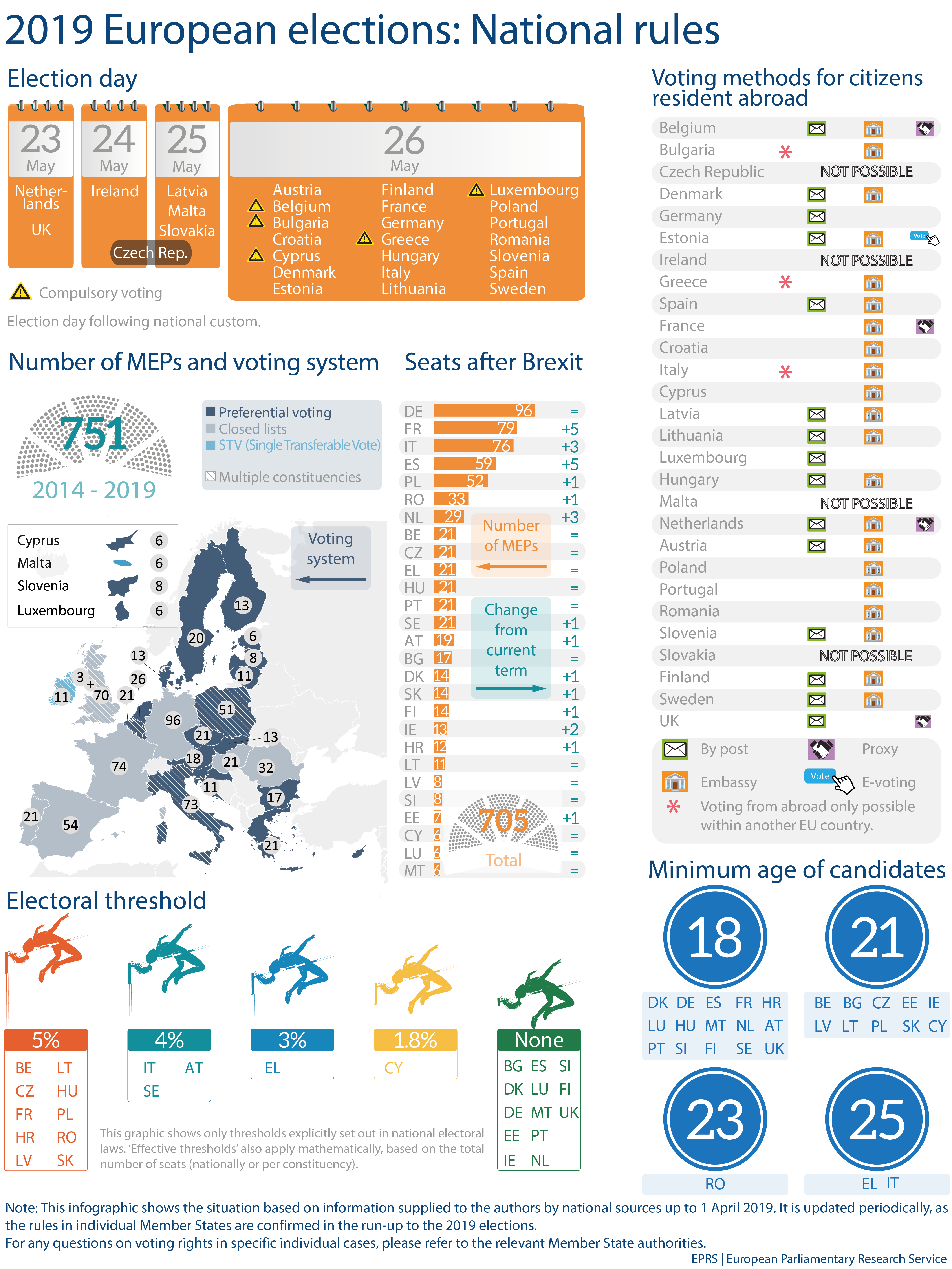Facts and figures on European Parliament elections #EUCitizenship
We know, that young people may find it difficult to engage in political activities and sometimes struggle when they need to vote. Please read our promotional info on the importance of EU parliamentary elections. Soon we will share a post on how to vote!
Parliament provides up-to-date key facts and figures about the electoral process.
European elections are organised under the provisions of the overarching European electoral law (revised in 2002 and 2018). The revised law still needs to be ratified by national parliaments.
Practical details of the electoral process are governed by national laws and elections are held under the authority of each member state. Some countries have voting obligations, some will go to vote on 23 May, others on 24 or 26 May, the minimum voting age differs from country to country and so do thresholds. Find out about national rules.

Regular updates on voting information for citizens, constituencies and candidates in each member state, including information on how to vote from abroad, are provided on the EP elections website.
Parliament’s make-up 1979-2019
An extensive EP Research Briefing (updated April 2019) provides key facts and figures about the European Parliament, both today and in the seven previous terms since direct elections were introduced in June 1979.
You will find graphics, charts and figures on
- the composition of the European Parliament now and in the past,
- the increase in the number of parties represented in the Parliament and evolution of political groups,
- the rise in the number of women sitting in the Parliament,
- the electoral systems used in elections to the Parliament across the member states,
- turnout in European elections compared with national elections,
- the annual cost of the Parliament compared with other parliaments,
- the composition of the Parliament’s main governing bodies, and
- statistics on 2009-2018 legislative and non-legislative work.
Individual graphics are available free to download in the Graphic Warehouse (under Graphics on Area of Freedom, Security and Justice).
Parliament’s future composition
The number of MEPs after Brexit will be reduced to 705. If the UK is still an EU member state on 2 July, the current composition (751 MEPs) will continue to apply until the date of the UK’s withdrawal from the EU.
Full text you may find here: http://www.europarl.europa.eu/news/en/press-room/elections-press-kit/1/facts-and-figures-on-electoral-process
We encourage you to go and vote!
Your #SIA4Y team 🙂









